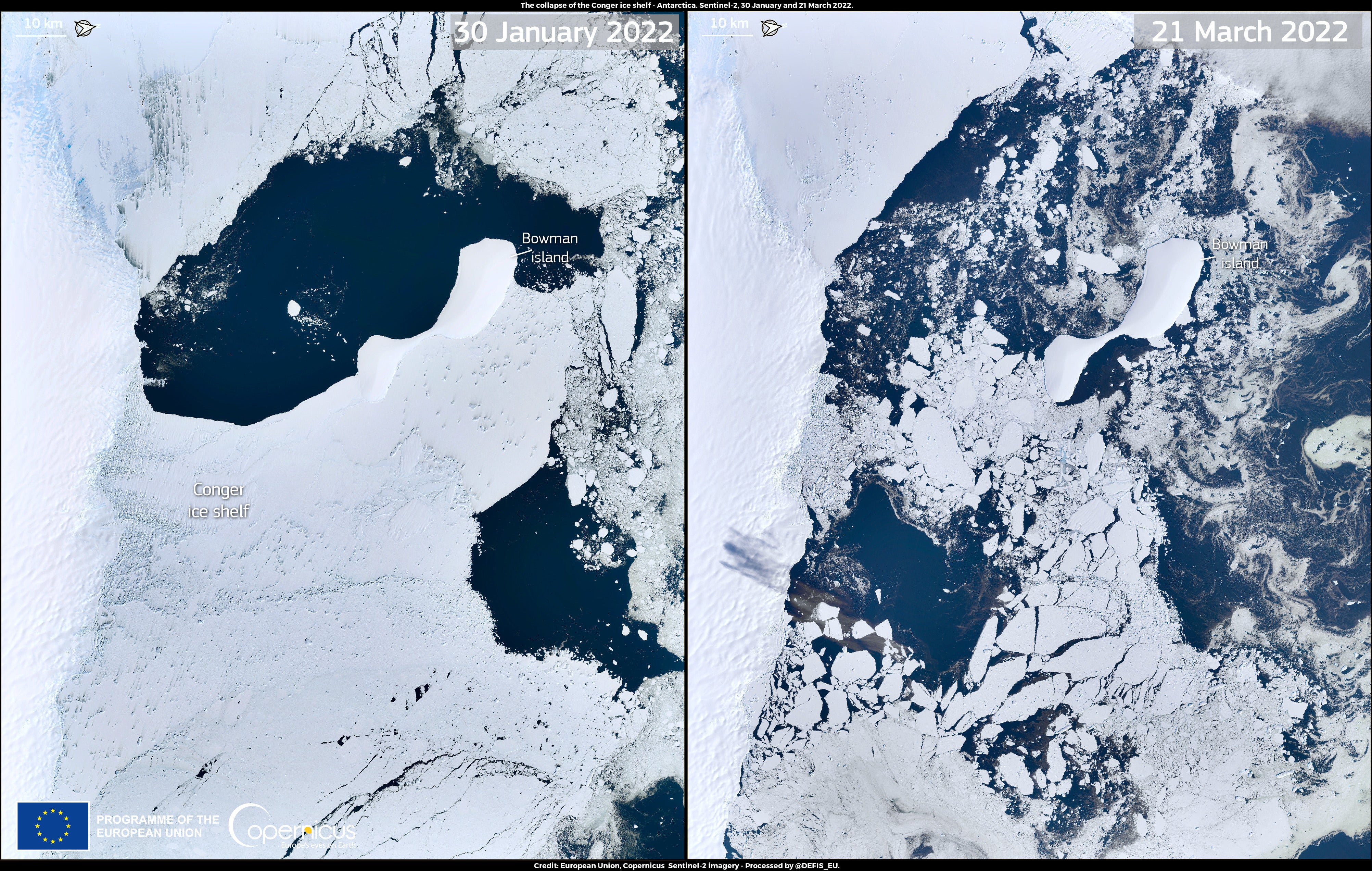Stunning before and after photos show collapse of Antarctica’s Conger ice shelf
Ice shelf almost as large as London disintegrated of East Antarctica amid record heat wave

Incredible new satellite photographs show Antarctica’s huge Conger ice shelf immediately before and after its devastating collapse.
The ice shelf, almost the size of London at 1,200 square kilometres (460 square miles), dramatically broke apart around 15 March amid record temperatures in Antarctica, where scientists warned it was up to 40C warmer than usual.
The images were captured by the European Union’s Copernicus Sentinel-2 satellite, first on 30 January, then on 21 March.
In the first image, a smooth white expanse off Antarctica’s eastern coast can be seen with an area of open water forming an inlet to the north.
In the second image, the smooth plain of ice has given way to a smashed melange of individual ice floes and the previously open water to the north is awash with icebergs.
The rapid disintegration of an ice sheet in this part of the east Antarctic has never been recorded before, with scientists suggesting the event could have significant implications for the extent to which the region is susceptible to the worsening climate crisis, and therefore, the amount of sea level rise which could occur.
Antarctic ice shelves are formed where glaciers which begin inland, on the Antarctic continent, meet the sea. Here they form ice sheets which form a solid layer of ice from the seabed to above the surface, beyond these, they form ice shelves.
The shelves help slowdown the flow of ice in the glaciers into the ocean - thereby stemming the main process responsible for the Earth’s rising sea levels.
The Copernicus team noted: "East Antarctica’s climate was previously thought to be stable and not heavily affected by climate change.
"In fact, an ice shelf collapse had never been registered in the area before, making the Conger ice collapse a historical event: the most significant collapse after 2002, when the Larsen B ice shelf collapsed due to surface ice melt."
Last week, climate scientists expressed concern as extreme heat events were occurring simultaneously at both of Earth’s poles, with parts of Antarctica more than 40C warmer than average and areas of the Arctic more than 30C hotter than usual.
While average temperatures in the Arctic have been rising two - three times faster than anywhere else on the planet, the Antarctic warming is especially noteworthy as apart from its vulnerable peninsula which is warming quickly and losing ice rapidly, Antarctica has not been warming much, especially when compared to the rest of the globe.
Subscribe to Independent Premium to bookmark this article
Want to bookmark your favourite articles and stories to read or reference later? Start your Independent Premium subscription today.

Join our commenting forum
Join thought-provoking conversations, follow other Independent readers and see their replies